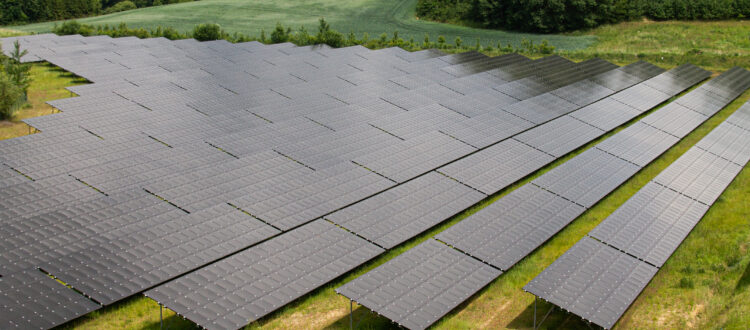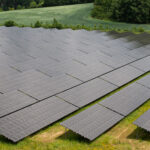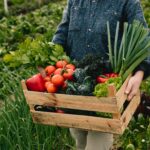Agrivoltaics in White Earth.
Crops that Grow Best Between Rows of Solar Panels and the Benefits of Agrivoltaics
Agrivoltaics, also known as “agrophotovoltaics” or “solar sharing,” is the practice of combining agriculture with solar energy production on the same land. This innovative approach offers several benefits, including increased land use efficiency, improved crop yields, and enhanced sustainability. When it comes to selecting crops for cultivation between rows of solar panels, certain considerations must be taken into account, such as shading, water availability, and the suitability of crops to the local climate. Here are some crops that tend to grow well in agrivoltaic systems and the benefits of incorporating agrivoltaics:
1. Shade-Tolerant Crops: Shade-tolerant crops are well-suited for cultivation between rows of solar panels, as they can thrive despite reduced sunlight. Some examples include:
- Leafy greens (lettuce, spinach, kale)
- Herbs (parsley, mint, cilantro)
- Certain root vegetables (radishes, carrots)
- Strawberries
These crops can benefit from the shading provided by the solar panels, which can help mitigate the effects of excessive heat and sun exposure.
2. Benefits of Agrivoltaics:
a. Land Use Efficiency: Agrivoltaics allow for the productive use of land that might otherwise be solely dedicated to solar energy production. By combining agriculture with solar energy generation, the same piece of land can provide multiple benefits, such as food or crop production alongside renewable energy.
b. Increased Crop Yields: Agrivoltaic systems can create a microclimate that is conducive to plant growth. The shading provided by solar panels can reduce heat stress on plants, conserve soil moisture, and extend the growing season. This can result in higher crop yields compared to traditional open-field farming.
c. Reduced Water Evaporation: The shading effect of solar panels helps reduce water evaporation from the soil, thereby conserving water and reducing irrigation needs. This is particularly beneficial in regions with water scarcity.
d. Improved Energy Efficiency: The cooling effect of vegetation in agrivoltaic systems can enhance the efficiency of solar panels. Solar panels tend to operate more efficiently when they are kept cooler, which can lead to increased energy production.
e. Biodiversity and Habitat Creation: Agrivoltaic systems can create habitats for beneficial insects, birds, and pollinators, contributing to enhanced biodiversity and ecological balance. This can lead to natural pest control and reduced reliance on chemical pesticides.
f. Local Food Production: Agrivoltaics support local food production and can contribute to food security by providing fresh, locally grown produce.
g. Carbon Sequestration: Both solar panels and plants capture carbon dioxide from the atmosphere. Integrating vegetation into solar installations can enhance carbon sequestration and contribute to mitigating climate change.
h. Educational and Community Benefits: Agrivoltaics provide opportunities for educational initiatives and community engagement. They can serve as outdoor classrooms for learning about renewable energy, sustainable agriculture, and the interconnectedness of natural systems.
In conclusion, agrivoltaics offer a synergistic approach that maximizes the use of land, increases agricultural productivity, and promotes sustainability. The combination of solar energy production with crop cultivation creates a win-win scenario that addresses both energy and food needs while supporting environmental stewardship and resilience. As the world seeks innovative solutions to address climate change and resource challenges, agrivoltaics stands as a promising example of integrated, regenerative land use.




